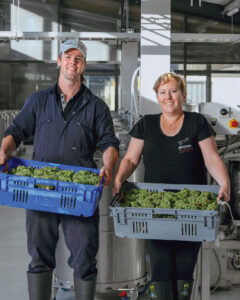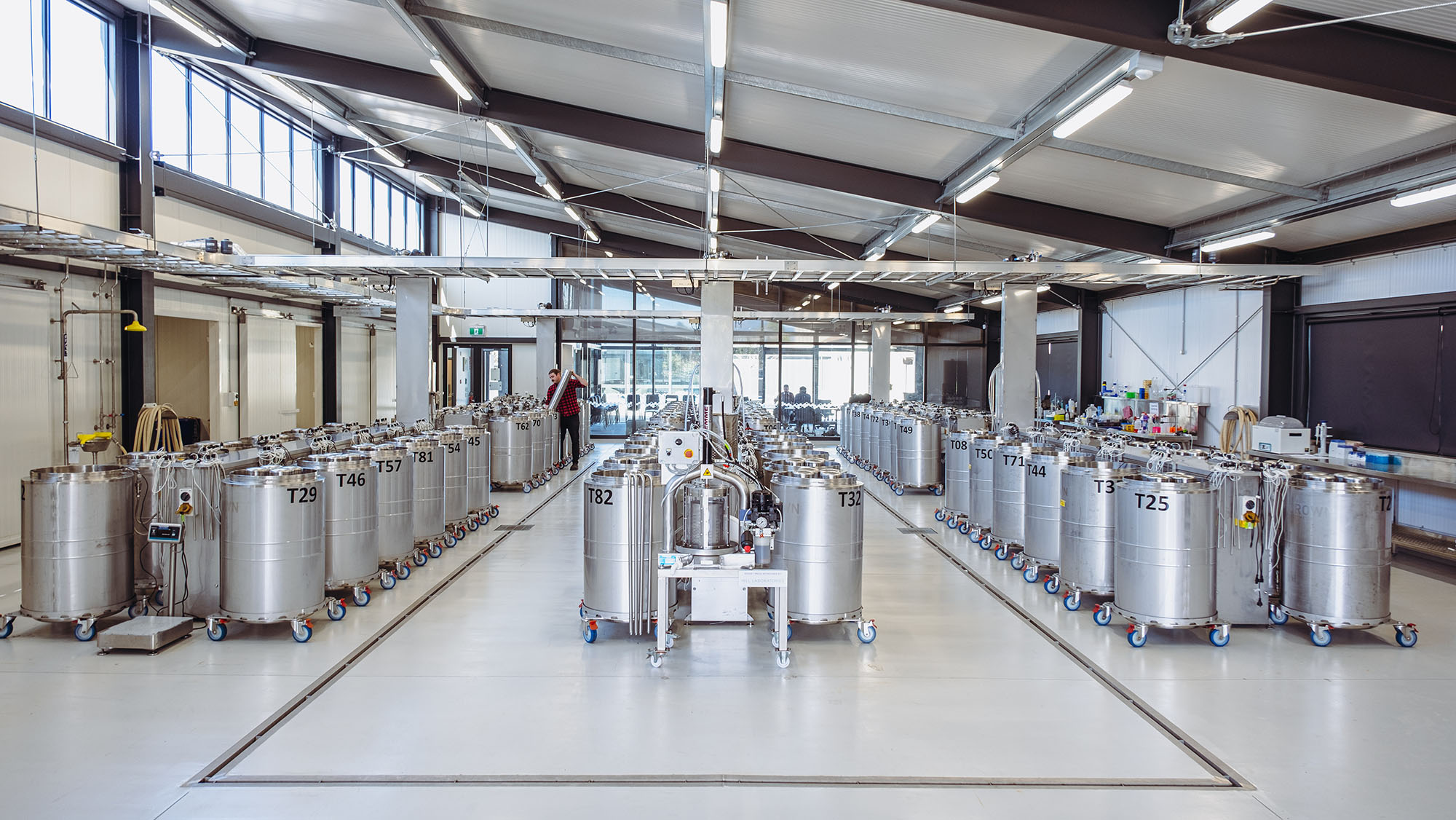Written by Joelle Thomson

Ngarita Warden with Assistant Winemaker Robert Winup. Photo Credit: Richard Briggs
Winemaker, marketer, communicator and educator Ngarita Warden is diving deep into wine research, with 270 ferments under the microscope this vintage.
“It’s going to be really busy,” says the Bragato Research Institute (BRI) Research Winemaker, as small parcels of grapes come steadily in, filling 17 litre tanks for some of the 22 commercial and four major BRI trials this year. Wine and viticultural research is on an upwards trajectory in New Zealand, she notes. “Like any industry, we need to be a lot smarter about what we do.”
This Blenheim-based role is something of a full circle for Ngarita, who followed a double degree in microbiology and zoology with postgraduate viticulture and oenology studies at Lincoln University in 2002. She went on to do vintages in New Zealand and Australia, a stint as a wine buyer in the United Kingdom, and work as a research and development coordinator at the Wine & Spirit Education Trust (WSET) in London. When she returned home, Ngarita worked in wine production and as a cellar door manager and marketer at Matua in West Auckland, and at Mudbrick and Te Motu on Waiheke Island, while also teaching WSET qualifications.
She joined the BRI team in February 2023, after a stint teaching winemaking and wine chemistry at Nelson Marlborough Institute Technology. She loves her role, which includes working with BRI’s commercial clients, such as yeast companies, agrichemical companies and wineries. “I also make wine, test it, and run a sensory panel to blind taste the wine and provide valuable feedback.” She also tests different antioxidants and thiol levels, which are important for Sauvignon Blanc. “We have capacity for 230 ferments each vintage, but this year I will have 270 ferments, which technically exceeds capacity,” Ngarita says. “But I am confident, because it includes a significant number of red wine ferments this year, which don’t take as much time in tank so we turn tanks.”
Other research projects include investigating colour in Pinot Noir and mitigating mildew aromas in powdery-impacted fruit. “The best thing to do is to discard fruit if it has powdery. But if you can’t, there are ways to deal with it. One thing we have found to be effective is the use of tannins in the fermentation. You’re never going to get rid of the powdery mildew taint but there are ways to minimise it.”
One of the most fascinating aspects of her work for BRI to date has been quercetin levels, Ngarita says. “That has been an increasing problem in the last few years. In hotter vintages with less cloud cover, we start to see quercetin instability in some wines. We have found that the biggest impact we can make on this problem is in the vineyard by giving fruit a bit of shade. Drought conditions can impact it as well, so ensuring there is enough water is another helpful factor. But the main issue is that this instability often doesn’t appear until the wine is in the bottle, so we need to look at whether the risk factors suggest it is going to be a risk and to take mitigation steps, if we think that’s the case.
Ngarita is also excited by research into varieties such as Albariño. “We’re looking at it as a similar but different variety to Sauvignon, and predicting weather patterns and what’s going to happen in the future in terms of humidity and rainfall,” she says. “The aim is to consider whether this is a good alternative to Sauvignon Blanc because it’s a much more disease-resistant variety, which has developed to grow in conditions with about double the rainfall that we have in its Spanish homeland.”
Beyond the work in the winery, she is excited by BRI’s seven-year research programme to create greater diversity in Sauvignon Blanc, being undertaken with BRI partners Plant & Food Research and Lincoln University, with the goal of creating 12,000 new variants to build greater resilience into the wine industry. “We pretty much have one clone of Sauvignon Blanc in this country and it is nearly all planted on the same rootstock. If something goes wrong, we are very exposed,” Ngarita says. “The programme will select improvements in traits such as yield, resistance to fungal infection, frost tolerance and water use efficiency. We want to have vines that either maintain the iconic Marlborough Sauvignon Blanc wine flavour and aroma or offer novel Sauvignon Blanc styles to expand market opportunities.”
Her passion for the science of wine is perfect complement to her love of the final product. The WSET tutor has been teaching people how to drink wine since 2007, and notes that the qualifications take a winemaker’s understanding to the next level. “Knowing why a wine tastes the way it does in terms of terroir, history, oak and all the other factors that go into it all helps so much when discussing wines and making decisions on future wine styles or winemaking choices in the winery.”
This article was published in New Zealand Winegrower Magazine issue 145 and is republished with permission.

















